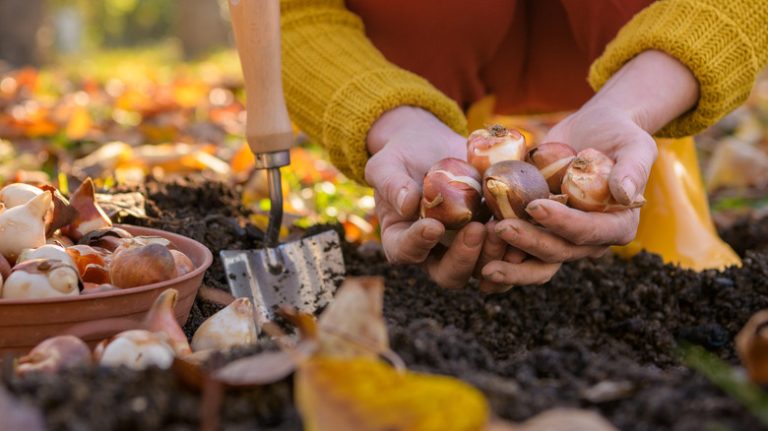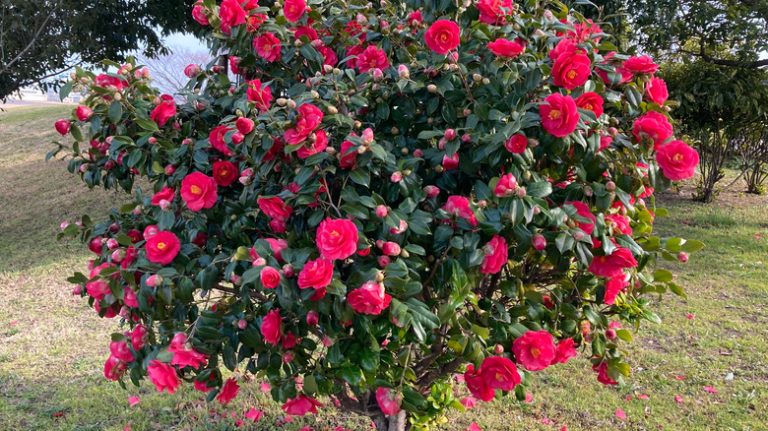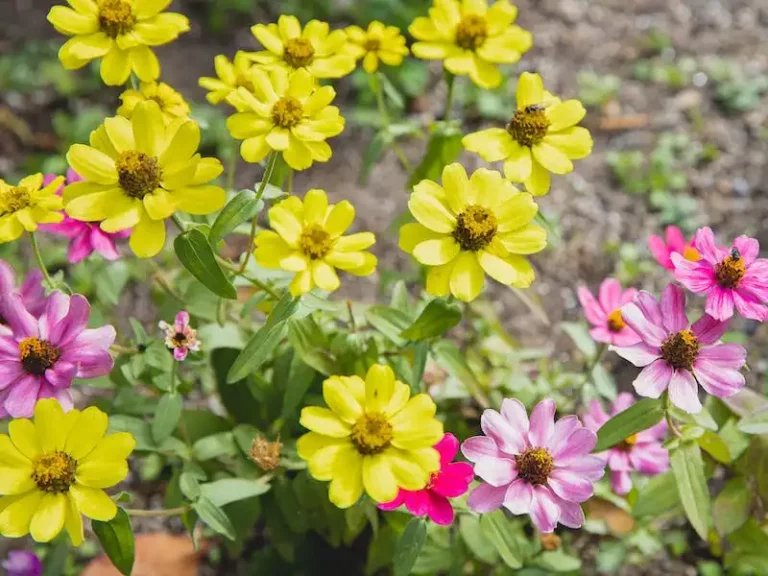Petunias are a popular choice for many gardeners due to their vibrant colors and ability to thrive in a wide range of conditions. While they are generally considered a balanced and hardy plant, temperatures can still pose some problems for them.
One of the main issues that petunias can experience is becoming leggy. This is likely to happen in temperatures that are too hot, causing the plant to stretch out and appear sparse. To cancel out this problem, it is important to provide the petunia with a content and open drainage, including a mix of potting soil and sand.
Petunias are able to tolerate a wide range of temperatures, from hot summers to cooler spring and fall seasons. However, they may also have issues in extreme heat or cold, so it’s best to start them in more favorable conditions. They typically grow best in temperatures between 65 and 85 degrees Fahrenheit (18 to 29 degrees Celsius).
Another way to help petunias spruce up is to plant them in containers with good drainage and lights. This will not only prevent leggy growth, but also ensure that the plant receives enough light to produce vibrant colors. Additionally, petunias are known to have somewhat tolerant stems, so they can handle a double temperature experience.
It is worth noting that not all petunia varieties have the same temperature tolerance. The Wave petunia, for example, is known to be more resistant to heat and cold compared to other types. This makes it an excellent choice for gardeners who may face extreme temperature variations in their particular location.
How Much Cold Can Petunias Handle
Petunias are popular flowering plants known for their vibrant colors and abundant blooms. However, when it comes to temperature tolerance, petunias have their limits. While they are generally hardy and can tolerate a range of temperatures, they are not able to handle extreme cold.
Most petunias, including the popular grandiflora variety, prefer to be planted in a place where they can get plenty of sunlight. They also require well-drained soil and ample water to keep their leaves from wilting. Petunias can tolerate slightly colder temperatures, down to about 40 degrees Fahrenheit (4 degrees Celsius), but anything below that can cause problems.
If you’re growing petunias outdoors and the temperatures are projected to drop below 40 degrees Fahrenheit (4 degrees Celsius), it’s best to move them indoors or cover them with black plastic to create a little extra warmth. You can also water the plants lightly before covering them, as the moisture will help to insulate the roots.
In more temperate climates, where the winters are mild, petunias may still be able to handle the cold. However, it’s important to choose cold-tolerant petunia varieties and make sure they are well-established before the first frost. Petunias can be grown from seed or transplanted as seedlings, but if you choose to start from seed, it’s best to start them indoors and then move them outside when the weather is suitable.
In addition to cold temperatures, petunias can also be sensitive to frost. Frost can damage the flowering stems and leaves, causing them to wilt and turn brown. To protect your petunias from frost, you can cover them with a cloth or blanket when frost is expected.
Overall, while petunias are relatively hardy plants, they do have their limits when it comes to cold tolerance. It’s important to monitor the weather conditions and take appropriate steps to protect your petunias from extreme cold, including moving them indoors or covering them with plastic or cloth. By providing the right conditions and care, you can enjoy beautiful petunias throughout the growing season.
Leave a Reply Cancel reply
Planting and caring for petunias requires attention to detail and patience. With the right conditions and proper care, these beautiful flowers can thrive and bloom abundantly.
When it comes to temperature tolerance, petunias are quite hardy. They can tolerate a wide range of temperatures, including both hot and cold extremes. However, they do best in daytime temperatures between 70°F and 80°F (21°C and 27°C) and nighttime temperatures between 60°F and 70°F (15°C and 21°C).
During the hot summer months, petunias need protection from direct sunlight, as excessive heat can cause the flowers to wilt. Providing them with some shade during the hottest part of the day will help prevent this issue.
In terms of planting, petunias prefer full sunlight. They should be planted in well-draining soil that is rich in organic matter. Before planting, it’s a good idea to amend the soil with compost or other organic matter to improve its fertility and drainage.
When fertilizing petunias, it’s important not to overdo it. Too much fertilizer can lead to excessive foliage growth at the expense of flower production. A balanced, slow-release fertilizer applied once a month is usually sufficient.
If you want your petunias to bloom for a long time, deadheading is essential. This involves removing the faded flowers to encourage new blooms to form. Simply pinch off the old flowers at the base of the stem to promote continuous blooming.
Watering is another important aspect of petunia care. The soil should be kept evenly moist, but not soggy. It’s important to water the plants deeply and thoroughly, allowing the water to penetrate the soil and reach the roots. Watering in the morning is best, as it gives the plants a chance to dry before nighttime, reducing the risk of fungal diseases.
In colder regions, petunias are often grown as annuals or started from seeds indoors before the last frost date in spring. If you plan to start petunias from seeds, it’s important to provide them with adequate warmth and light. A heat mat and supplementary lights can help encourage germination and early growth.
Transplanted petunias may experience some transplant shock, so it’s important to handle them with care. Be sure to water them well before and after transplanting, and provide some shade for a few days until they adjust to their new environment.
While petunias are generally pest-resistant, keeping an eye out for common pests like aphids, slugs, and snails is important. Regularly inspecting your plants and taking action at the first sign of pest activity can help prevent larger infestations and resulting damage.
Overall, petunias are relatively low-maintenance plants. With the proper care and attention, they will reward you with a profusion of colorful blooms. Whether you prefer the compact habit of grandiflora varieties or the trailing growth of wave petunias, these vibrant flowers are a joy to have in any garden or hanging basket.
Please note that the information provided in this article is for general informational purposes only. It is not a substitute for professional advice or a guarantee of specific results. Always consult with a master gardener or other horticultural expert for guidance on growing and maintaining healthy petunias.
Content Disclaimer
The information provided here is for general informational purposes only. The author, website, and associates make no representations or warranties of any kind, express or implied, about the completeness, accuracy, reliability, suitability, or availability with respect to the website or the information, products, services, or related graphics contained on the website for any purpose. Any reliance you place on such information is therefore strictly at your own risk.
In no event will we be liable for any loss or damage including without limitation, indirect or consequential loss or damage, or any loss or damage whatsoever arising from loss of data or profits arising out of, or in connection with, the use of this website.
While every effort is made to keep the information up to date and correct, we make no representations or warranties of any kind, express or implied, about the completeness, accuracy, reliability, suitability, or availability with respect to the website or the information, products, services, or related graphics contained on the website for any purpose. Any reliance you place on such information is therefore strictly at your own risk.
In no event will we be liable for any loss or damage including without limitation, indirect or consequential loss or damage, or any loss or damage whatsoever
Petunia Temperature Tolerance
Petunias are beautiful flowering plants that are popular in gardens and landscapes. They come in a wide variety of colors and types, from compact and double blooms to cascading and self-seeding varieties. When it comes to temperature tolerance, petunias are fairly adaptable, but there are some important factors to consider when planting and caring for them.
Petunias can be grown from seeds or transplanted as young plants. If starting from seeds, it’s best to sow them indoors 10 to 12 weeks before the last frost date. Petunias prefer a temperature range of 70 to 75°F (21-24°C) for optimal germination. Transplanted petunias should be hardened off before planting in the garden, gradually exposing them to outdoor conditions over a period of 7 to 10 days.
When it comes to temperature, petunias are fairly hardy and can tolerate a wide range of conditions. They can handle temperatures as low as 40°F (4°C) and as high as 100°F (38°C). However, extreme temperatures can cause stress and affect their blooming ability. In particular, petunias may wilt in hot weather and may not bloom as abundantly when temperatures are consistently above 85°F (29°C).
One side effect of hot weather is the tendency for petunias to become leggy. This is when the plants stretch out and the stems become long and weak. To prevent legginess, petunias should be planted in an area with plenty of sunlight and good air circulation. They should also be watered regularly, making sure to provide enough moisture without overwatering. Petunias prefer well-drained soil, so adding organic matter or using a potting soil with good drainage is recommended.
In terms of cold weather, petunias can tolerate light frost and can even handle temperatures as low as 32°F (0°C) for short periods of time. However, prolonged exposure to cold temperatures can damage the plants and may even kill them. If frost is expected, it’s best to cover petunias with a plastic sheet or move them indoors temporarily to protect them from the cold.
When it comes to feeding petunias, a balanced fertilizer can help promote healthy growth and blooming. Petunias should be fed every two to four weeks with a water-soluble fertilizer or a slow-release granular fertilizer according to the package instructions.
In summary, petunias are tolerant of a wide range of temperatures, but they do have their limits. They prefer temperatures between 70 and 75°F (21-24°C) for germination and can handle temperatures as low as 40°F (4°C) and as high as 100°F (38°C) for growing and blooming. However, they may wilt in hot weather and may not bloom as abundantly in temperatures above 85°F (29°C). It’s important to provide the right conditions for petunias to thrive, including ample sunlight, well-drained soil, and regular feeding. With proper care and attention, petunias can add a splash of color and beauty to any garden or landscape.



